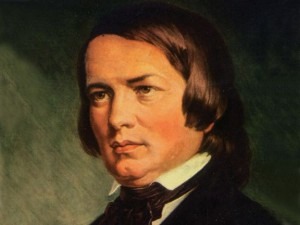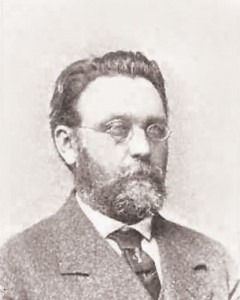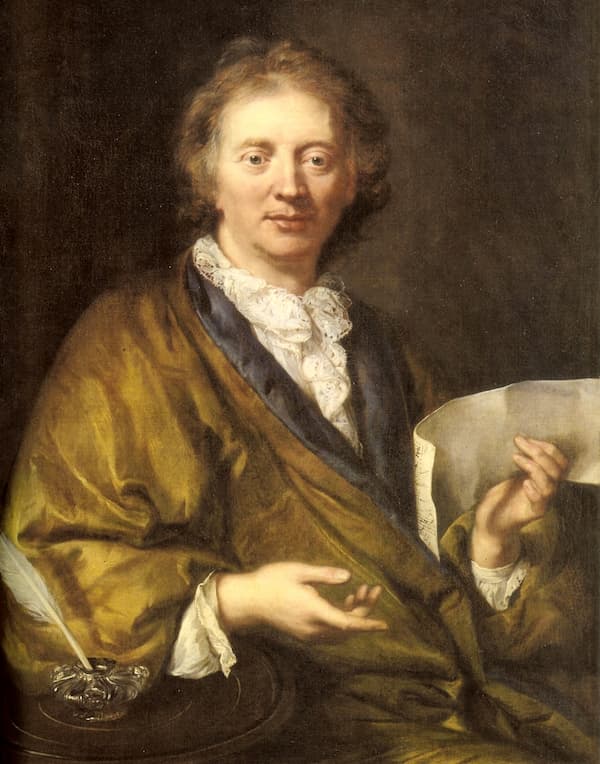
Schumann
Credit: https://goodmorningbritten.files.wordpress.com/
Used special ways of organising
Sounds that, when played on
Instruments, spell out
Cryptic messages!
Well, that was my feeble attempt at writing an acrostic poem, but I was suddenly inspired to write one after rediscovering Schumann’s Carnaval, which uses a musical cryptogram (more on this piece later). Whereas a word or message is spelt by the first letter of each line of such a poem, a musical cryptogram is embedded within a sequence of musical notes, most often to reflect names or sometimes places.
Since note names only cover the alphabet from A to G, a few different ways of encoding the remaining letters have been established, and the most common one is often referred to as the German method. In German musical notation, the note B-flat is named B and B-natural is H, E-flat is Es (which can phonetically represent the letter S) and A-flat is As. Other ways of encoding notes include the French method (see table below for the cipher) as well as several idiosyncratic systems used by composers from the 20th-century.
Note | A | B | C | D | E | F | G |
|
|
|
|
|
|
|
|
Letters represented by the note | A | B | C | D | E | F | G |
H | I | J | K | L | M | N | |
O | P | Q | R | S | T | U | |
V | W | X | Y | Z |
|
|
The only composer’s name that can be spelt entirely and without confusion is Bach. Thus, the B-A-C-H motif has been used prominently by composers from both the 19th- and 20th-centuries, such as Schumann (Sechs Fugen über den Namen: Bach), Liszt (Fantasy and Fugue on the theme B-A-C-H), Webern (String Quartet), and Schnittke (Third Symphony) etc.
Schumann: Carnaval, Op. 9
Arthur Rubinstein

Albert Dietrich
Credit: http://www.robert-schumann.eu/
 Another interesting example of a work based on a musical cryptogram, albeit a little more freely, is the Quartet B-la-F. In the 19th-century, there was a millionaire and amateur violist, Mitrofan Belaiev, who was so passionate about chamber music and supportive of Russian music that he not only supported musicians financially, but also held weekly chamber music soirees at his St Petersburg mansion. During one of these evenings in 1886, to celebrate this patron’s 50th birthday, four composers presented a work not only dedicated to him but also based phonetically on his last name: B-la-F. The first movement was written by Rimsky-Korsakov, and begins with the theme in the viola; the same instrument introduces another version of the theme in Liadov’s second movement; in the third, Borodin adds a touch of Spanish flair to the theme, which is again played first by the viola; and Glazunov’s finale acts as a lively and showy ending to the work.
Another interesting example of a work based on a musical cryptogram, albeit a little more freely, is the Quartet B-la-F. In the 19th-century, there was a millionaire and amateur violist, Mitrofan Belaiev, who was so passionate about chamber music and supportive of Russian music that he not only supported musicians financially, but also held weekly chamber music soirees at his St Petersburg mansion. During one of these evenings in 1886, to celebrate this patron’s 50th birthday, four composers presented a work not only dedicated to him but also based phonetically on his last name: B-la-F. The first movement was written by Rimsky-Korsakov, and begins with the theme in the viola; the same instrument introduces another version of the theme in Liadov’s second movement; in the third, Borodin adds a touch of Spanish flair to the theme, which is again played first by the viola; and Glazunov’s finale acts as a lively and showy ending to the work.F-A-E sonata:
The Quartet B-la-F is not the only collaborative work dedicated to a specific figure. 30 years before its composition, in 1853, a gift was presented to violinist Joseph Joachim by three composers – Schumann, Brahms, and Schumann’s student Albert Dietrich – in the form of a four-movement work for violin and piano, the F-A-E sonata. The pitches F, A, E represent the German phrase ‘Frei aber einsam’ (free but lonely), which Joachim had made his personal motto, and all the movements of this sonata are loosely based on these pitches and tonal areas, though Brahms instead transposed the motif to another key. Joachim, delighted to receive this gift, identified the composer of each movement easily. How familiar are you with each composer’s compositional style (hint: Schumann wrote two movements)?
Or how about having a go at making your own musical cryptogram?
1 The so-called ‘League of David’ referred to Schumann and his contemporaries, who struggled to protect the old tradition of classical music composition that emphasized musical poetry and intellect against the ‘Philistines’, ‘new’ composers such as Rossini and Liszt, who were seen to focus on theatrical ideas and technical virtuosity.


